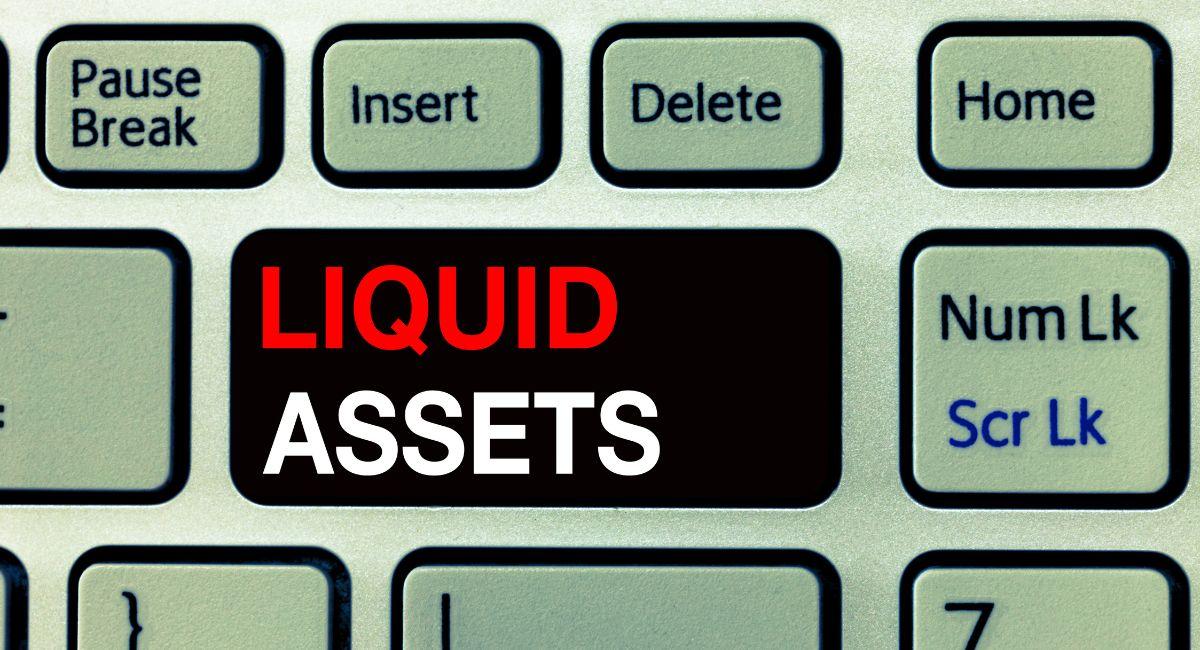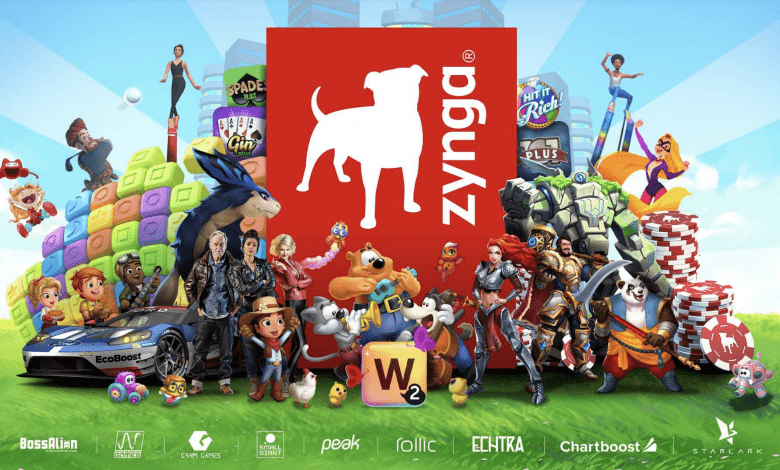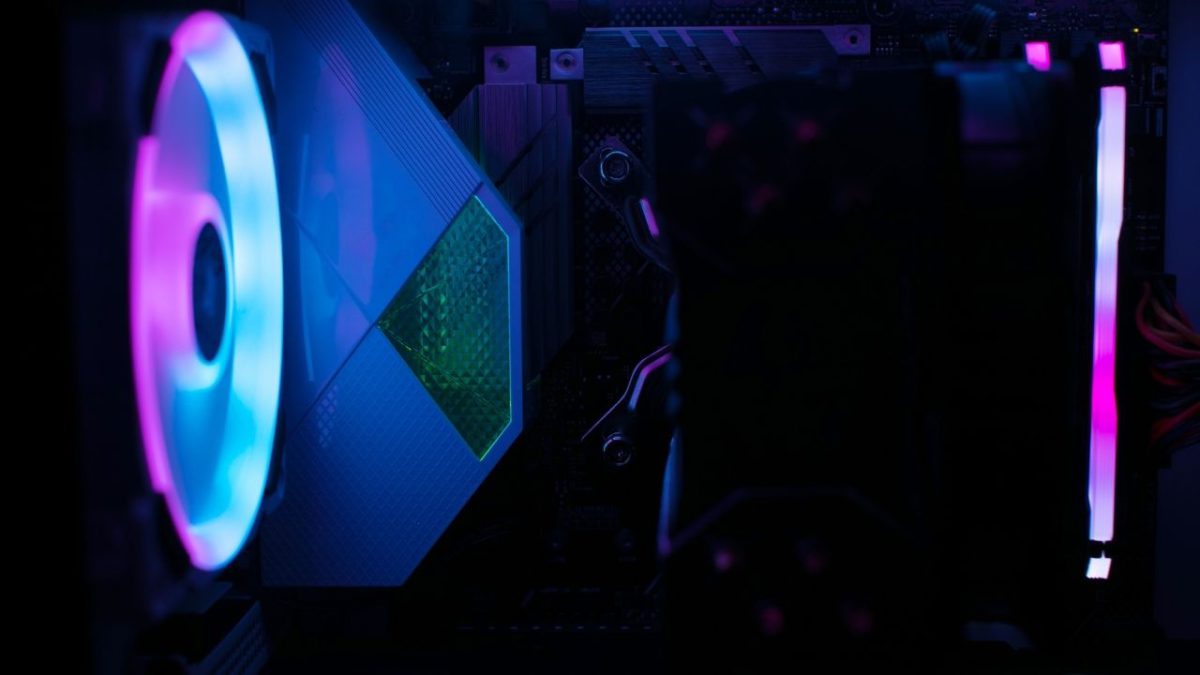Your Perfect Guide To Player Liquidity In The World Of Blockchain Gaming
In the ever-evolving landscape of blockchain gaming, one of the crucial aspects that has gained significant attention is player liquidity. As blockchain technology continues to redefine the gaming industry, understanding and harnessing player liquidity is essential for both developers and gamers alike. This comprehensive guide delves into the intricacies of player liquidity in blockchain gaming, providing insights, strategies, and the impact on the overall gaming experience.
Understanding Player Liquidity:

Player liquidity refers to the ease with which players can buy, sell, or trade in-game assets, currencies, or tokens within the blockchain gaming ecosystem. Unlike traditional gaming setups, blockchain games leverage decentralized technologies, enabling players to have true ownership of their in-game assets. This ownership, facilitated by blockchain’s transparent and secure nature, gives rise to a dynamic environment where player liquidity plays a pivotal role.
The Role of Blockchain:
Blockchain serves as the underlying technology that empowers player liquidity in gaming. Through the use of smart contracts, players can seamlessly exchange in-game assets on decentralized platforms, reducing the need for intermediaries. This transparency and security foster trust among players, encouraging increased participation and investment in the gaming ecosystem.
Factors Influencing Player Liquidity:

Player liquidity in blockchain gaming is influenced by a myriad of factors that collectively shape the dynamics of the gaming ecosystem. Understanding these factors is crucial for developers and players alike as they navigate the decentralized world of blockchain games. Below, we delve into the intricate details of the key elements that significantly impact player liquidity:
- Game Design and Economics:
- Asset Ownership Rules: The design of the game’s economy, including clear rules regarding the ownership and transferability of in-game assets, plays a fundamental role in determining player liquidity. Games with transparent and well-defined ownership structures instill trust among players, fostering a conducive environment for asset trading.
- Tokenomics: The economic model of a game, often referred to as tokenomics, influences player behavior and liquidity. Factors such as the issuance rate of in-game tokens, the scarcity of rare assets, and the overall balance of the in-game economy contribute to the attractiveness of assets for trading.
- Community Engagement:
- Communication Channels: An active and engaged community is a driving force behind player liquidity. Games that facilitate communication through forums, social media, or in-game chatrooms create a sense of belonging among players. A vibrant community is more likely to participate in asset trading, enhancing overall liquidity.
- Events and Competitions: In-game events, competitions, and challenges serve as catalysts for increased player engagement. By offering rewards tied to in-game assets or tokens, developers can stimulate trading activities, creating a more liquid environment.
- Interoperability:
- Blockchain Standards: The interoperability of in-game assets across different blockchain games or platforms is a critical factor in player liquidity. Blockchain standards like ERC-721 and ERC-1155 facilitate the seamless transfer of assets, enabling players to leverage their holdings in multiple games. Games that embrace these standards contribute to a more interconnected and liquid ecosystem.
- Regulatory Environment:
- Compliance and Legal Frameworks: The regulatory environment surrounding blockchain gaming can impact player liquidity. Clarity in legal frameworks and compliance measures instills confidence in players, encouraging them to participate in trading activities without fear of legal repercussions. Conversely, uncertainty or stringent regulations may deter players from engaging in asset trading.
- Technology and User Experience:
- Blockchain Scalability: The scalability of the underlying blockchain infrastructure directly influences the speed and cost of transactions. Games built on blockchains with high throughput and low transaction fees provide a smoother trading experience, encouraging more players to participate in liquidity-related activities.
- User-Friendly Interfaces: The accessibility and user-friendliness of the interfaces through which players interact with blockchain assets impact liquidity. Intuitive interfaces that simplify the process of buying, selling, or trading assets contribute to a more active and liquid player base.
- Incentive Mechanisms:
- Rewards and Incentives: Developers can implement various incentive mechanisms to encourage liquidity. This includes rewards for providing liquidity to decentralized exchanges or participating in liquidity pools. Incentivizing players with additional in-game assets, tokens, or exclusive items creates a positive feedback loop that enhances liquidity.
- Market Dynamics:
- Supply and Demand: Traditional economic principles of supply and demand also play a role in player liquidity. Games with a limited supply of rare or valuable assets may experience heightened trading activities as players seek to acquire or sell these assets based on market conditions.
- Security and Trust:
- Smart Contract Audits: The security of the underlying blockchain and smart contracts is paramount in building trust among players. Games that undergo rigorous smart contract audits and prioritize security measures provide players with confidence in engaging in asset trading activities.
Player liquidity in blockchain gaming is a multifaceted phenomenon influenced by game design, community dynamics, technological considerations, regulatory factors, and more. Successful navigation of these factors requires a holistic approach that aligns the interests of developers and players, fostering an environment where the exchange of in-game assets becomes a seamless and rewarding experience.
Strategies for Maximizing Player Liquidity:

Maximizing player liquidity in blockchain gaming involves implementing strategic approaches that encourage active participation in trading, buying, and selling in-game assets. Developers and stakeholders within the gaming ecosystem can leverage a variety of strategies to create a dynamic and liquid environment. Let’s explore these strategies in extensive detail:
- Liquidity Pools:
- Definition and Purpose: Liquidity pools involve players contributing their assets to a pool that is used to facilitate trades within the game. These pools serve as a decentralized source of liquidity, allowing players to buy and sell assets more easily.
- Incentive Mechanisms: Developers can incentivize players to contribute to liquidity pools by offering rewards such as additional in-game assets, native tokens, or a share of transaction fees generated from the pool. This creates a self-sustaining mechanism that encourages ongoing participation.
- Decentralized Exchanges (DEX):
- Integration within the Game: Incorporating decentralized exchanges directly into the game interface allows players to trade assets seamlessly without relying on external platforms. This enhances user experience and eliminates barriers to entry for players interested in engaging in liquidity-related activities.
- User-Friendly Interface: Designing a user-friendly interface for the decentralized exchange ensures that even players with limited experience in blockchain technology can easily navigate and participate in asset trading.
- Gamified Economics:
- Introduction of Challenges and Quests: Developers can introduce in-game challenges or quests that reward players with valuable assets or tokens upon completion. This gamified approach encourages active participation in trading activities as players strive to acquire these rewards.
- Dynamic Events: Hosting dynamic in-game events tied to economic activities, such as market fluctuations or asset releases, keeps the economy dynamic and engages players in trading. Events can introduce scarcity or abundance, influencing market trends and liquidity.
- Interoperability:
- Utilizing Blockchain Standards: Supporting blockchain standards like ERC-721 and ERC-1155 enables seamless interoperability of in-game assets across different games or platforms. Players can leverage their assets in multiple games, fostering a cross-game liquidity ecosystem.
- Collaborations and Partnerships: Collaborating with other games or platforms to enable cross-game asset transfers expands the scope of liquidity. Partnerships that facilitate interoperability contribute to a more interconnected gaming landscape.
- Incentive Mechanisms:
- Loyalty Programs: Establishing loyalty programs that reward players for long-term engagement and trading activities encourages a steady flow of liquidity. Loyalty points, exclusive items, or special privileges can be offered to incentivize consistent participation.
- Referral Programs: Implementing referral programs where existing players are rewarded for bringing in new participants can drive user acquisition and increase overall liquidity. These programs create a network effect, expanding the player base and liquidity pool.
- Dynamic Economic Policies:
- Adjustable Tokenomics: Designing the in-game economic system with adjustable tokenomics allows developers to adapt to changing market conditions. This flexibility enables the adjustment of token issuance rates, asset scarcity, or other economic parameters to maintain a healthy balance and sustain liquidity.
- Community Engagement:
- Governance Mechanisms: Involving the community in governance decisions, especially those related to economic policies, can enhance player engagement and liquidity. Community members who have a say in decision-making are more likely to actively participate in economic activities.
- Social Trading Features: Implementing social trading features allows players to observe and replicate the trading strategies of successful peers. This creates a social aspect to trading, fostering a sense of community and encouraging liquidity-driven activities.
- Security Measures:
- Secure Smart Contracts: Ensuring the security of smart contracts used in trading activities is crucial for maintaining trust among players. Regular audits, bug bounties, and transparent communication regarding security measures contribute to a secure trading environment.
- Educational Initiatives:
- Tutorials and Guides: Providing tutorials and guides within the game interface educates players on how to engage in liquidity-related activities. Clear instructions on using decentralized exchanges, contributing to liquidity pools, and understanding market dynamics empower players to participate confidently.
- Market Dynamics and Feedback Loops:
- Responsive Economic Adjustments: Monitoring market dynamics and responding to changes in player behavior by making timely adjustments to economic policies ensures a balanced and responsive in-game economy. This adaptability contributes to sustained player interest and liquidity.
- Feedback Mechanisms: Implementing feedback mechanisms allows players to provide input on economic features. This direct feedback loop between developers and players fosters a collaborative environment, aligning the economic system with player preferences.
Player Liquidity: A Key Theme for 2024 in Blockchain Gaming
The Web3 game development infrastructure is rapidly expanding, as outlined in Delphi Digital’s report.
Despite the market capitalization of gaming projects stabilizing between $4 billion and $7 billion, there’s…— Nabo Binh (@Nabobinh2001) January 3, 2024
How does Player liquidity work as Economic Incentives for Developers?

Player liquidity serves as a powerful economic incentive for developers in the blockchain gaming space. Understanding how player liquidity works as an incentive involves recognizing the symbiotic relationship between developers and players within the decentralized gaming ecosystem. Here, we explore in vast detail how player liquidity can be a driving force for economic incentives for developers:
- Tokenomics and Developer Revenue:
- Transaction Fees: In a decentralized gaming environment, transactions within the game, such as buying, selling, or trading assets, often incur transaction fees. Developers can integrate these fees into the game’s tokenomics, generating a continuous revenue stream directly tied to player liquidity. This creates a financial incentive for developers to encourage and sustain a liquid marketplace.
- Liquidity Pool Participation:
- Developer Staking: Developers can create liquidity pools within their games and incentivize players to contribute assets. To encourage liquidity provision, developers may require a stake of their native tokens from players. This staking mechanism not only enhances liquidity but also creates a direct economic incentive for developers, as the staked tokens represent a commitment to the success of the game’s economy.
- Decentralized Exchange Integration:
- Trading Volume and Fees: By integrating decentralized exchanges (DEX) directly into the game interface, developers can benefit from increased trading volume. The transaction fees generated on these exchanges contribute to the developer’s revenue. Providing a seamless and user-friendly trading experience within the game encourages more players to engage in trading activities, further boosting liquidity and developer incentives.
- Incentive Mechanisms for Liquidity Providers:
- Rewarding Liquidity Providers: Developers can design incentive mechanisms within liquidity pools, rewarding participants with additional in-game assets, native tokens, or a share of transaction fees. These rewards act as a direct economic incentive for players to contribute liquidity, creating a mutually beneficial relationship where both developers and players profit from an active and liquid ecosystem.
- Dynamic Economic Adjustments:
- Adaptive Tokenomics: Developers can design the game’s economic system with adaptability in mind. The ability to make adjustments to tokenomics based on liquidity metrics ensures a responsive and balanced in-game economy. Players contributing to liquidity pools and engaging in trading activities become integral sources of feedback for developers to fine-tune economic policies.
- Developer-Owned Assets:
- In-Game Asset Ownership: Developers often retain ownership of certain in-game assets. As players actively trade and engage in the marketplace, the value of these assets may increase. Developers can benefit from the appreciation of their owned assets, creating a direct financial incentive tied to player-driven market dynamics.
- Gamified Economic Policies:
- Incentives through Gamification: Introducing gamified economic policies, such as challenges, quests, or competitions tied to liquidity-related activities, creates a fun and engaging environment for players. By offering exclusive rewards or recognition to top liquidity providers, developers foster a competitive spirit that drives player liquidity while simultaneously benefiting from increased economic activity.
- Community Engagement and Governance:
- Involving the Community: Engaging the community in governance decisions related to economic policies fosters a sense of ownership among players. Developers can implement governance mechanisms that allow players to have a say in economic adjustments, creating a collaborative environment where both developers and players work together to maximize liquidity.
- Revenue Sharing Models:
- Revenue Distribution: Developers can implement revenue-sharing models where a percentage of the overall revenue generated from liquidity-related activities is distributed among the player community. This model aligns the economic interests of developers with the player base, encouraging a thriving ecosystem where both parties benefit.
- Developer Commitment and Trust:
- Long-Term Commitment: By encouraging player liquidity and actively participating in the economic aspects of the game, developers demonstrate a long-term commitment to the success of their gaming ecosystem. This commitment builds trust among players, further motivating them to engage in liquidity-driven activities.
- Strategic Partnerships and Collaborations:
- Collaborative Ventures: Developers can explore strategic partnerships and collaborations with other games or platforms to enhance liquidity. Joint liquidity pools or interoperable assets across multiple games create additional revenue streams and economic incentives for developers involved in cross-platform ventures.
- Innovative Monetization Models:
- Asset Sales and Auctions: Developers can explore innovative monetization models, such as organizing in-game asset sales or auctions. The proceeds from these events contribute to developer revenue while providing players with unique opportunities to acquire rare assets, thus stimulating liquidity.
Also, read- Top 15 Ways Even A Noob Can earn Profit From Blockchain Gaming
Conclusion:
As blockchain gaming continues to revolutionize the traditional gaming landscape, player liquidity emerges as a critical factor in shaping the industry’s future. Developers and players must collaborate to create an ecosystem that maximizes the benefits of blockchain technology, fostering a dynamic and liquid environment. By understanding the factors influencing player liquidity and implementing strategic measures, the blockchain gaming community can collectively navigate the seas of innovation and ensure a thriving and sustainable future.
Stay informed with daily updates from Blockchain Magazine on Google News. Click here to follow us and mark as favorite: [Blockchain Magazine on Google News].
Get Blockchain Insights In Inbox
Stay ahead of the curve with expert analysis and market updates.
latest from tech
Disclaimer: Any post shared by a third-party agency are sponsored and Blockchain Magazine has no views on any such posts. The views and opinions expressed in this post are those of the clients and do not necessarily reflect the official policy or position of Blockchain Magazine. The information provided in this post is for informational purposes only and should not be considered as financial, investment, or professional advice. Blockchain Magazine does not endorse or promote any specific products, services, or companies mentioned in this posts. Readers are encouraged to conduct their own research and consult with a qualified professional before making any financial decisions. The featured image used is just a creative depiction of the title and it does not intend to hurt sentiments of any person or institution. If it hurts anyone sentiments, please do not hesitate to reach out to Blockchain Magazine.

 Bitcoin
Bitcoin  Ethereum
Ethereum  XRP
XRP  Tether
Tether  Solana
Solana  USDC
USDC  Dogecoin
Dogecoin  Cardano
Cardano  Lido Staked Ether
Lido Staked Ether  TRON
TRON  Wrapped Bitcoin
Wrapped Bitcoin  Chainlink
Chainlink  Wrapped stETH
Wrapped stETH  Sui
Sui  Avalanche
Avalanche  Stellar
Stellar  Hedera
Hedera  Toncoin
Toncoin  Shiba Inu
Shiba Inu  LEO Token
LEO Token  Hyperliquid
Hyperliquid  Bitget Token
Bitget Token  Litecoin
Litecoin  WETH
WETH  USDS
USDS  Polkadot
Polkadot  Bitcoin Cash
Bitcoin Cash  Ethena USDe
Ethena USDe  MANTRA
MANTRA  Wrapped eETH
Wrapped eETH  Uniswap
Uniswap  Pepe
Pepe  Ondo
Ondo  Monero
Monero  Aave
Aave  WhiteBIT Coin
WhiteBIT Coin  NEAR Protocol
NEAR Protocol  Mantle
Mantle  Official Trump
Official Trump  Aptos
Aptos  Dai
Dai  Internet Computer
Internet Computer  Ethereum Classic
Ethereum Classic  Bittensor
Bittensor  Cronos
Cronos  OKB
OKB  POL (ex-MATIC)
POL (ex-MATIC)  Gate
Gate 



